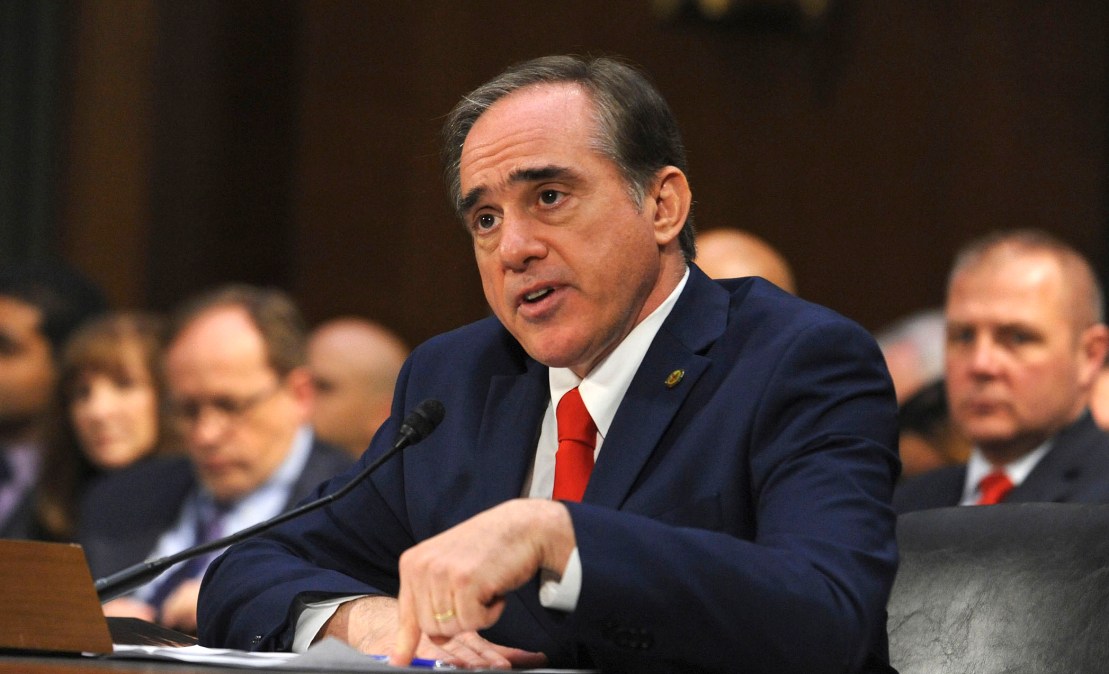‘A strategic mistake’: Shulkin criticizes VA’s decision against unified health records with DOD

It was a “strategic mistake” for the Department of Veterans Affairs not to move to an integrated, modernized electronic health record platform directly aligned with the Defense Department, the new VA secretary said Tuesday.
“This has been going on for a long, long time. It is a very difficult decision. It’s been kicked down the road, and if I could back up time, I believe it was a mistake not to have made a decision with the DOD at the time,” VA Secretary David Shulkin said. “Not to have an integrated platform and integrated record, I think, was a strategic mistake. But that’s past history, and we have to face the facts where we are now.”
The 2008 National Defense Authorization Act required, by law, the two departments to “jointly develop and implement a joint electronic health record and accelerate the exchange of health care information between the Department of Defense and the Department of Veterans Affairs,” also creating an interagency program office to lead the efforts.
The Pentagon has since moved to a $4.3 billion Cerner-developed commercial EHR platform, called MHS GENSIS, which it launched as a pilot this February, after delays, at Fairchild Air Force Base in Washington.
Despite the mounting pressure from watchdogs on Capitol Hill and veterans’ struggle to take digital medical records with them after military service due to the lack of such a unified system, Shulkin doesn’t have a “firm deadline” to decide on the future of VA’s electronic health records platform, he said Tuesday at a Politico event in the nation’s capital.
For now, he is “targeting” July as a loose timeframe for when VA will announce whether it sticks with its current and at one point “revolutionary” EHR platform — the Veterans Information Systems and Technology Architecture, known as VistA — or chooses a commercial replacement, like DOD did with the MHS GENESIS program.
“That is not the same as saying that if we do decide to move to a commercial system that we will decide which system to use or the process on how we’re going to make that decision,” Shulkin explained. “This is a lengthy process. These are complex issues. We are not going to rush into things.”
The VA’s embroiled path to a new EHR is nothing new to Shulkin — he testified, as undersecretary for health, in a handful of congressional hearings in recent years on the department’s health IT struggles, mostly pegged to the decline of VistA.
Speaking frankly, he said he wished a more thoughtful decision on the matter would have been made long before he was promoted to secretary.
Not talking money
A new system, if the VA decided upon that route, could cost as much as $16 billion. But Shulkin, at this point, doesn’t want to talk price specifics.
“I’m not approaching this decision that we’re going to be making this summer purely, or even largely, from a financial point of view,” he said. “Our lack of ability to have a clear vision on where we want to go and what’s the best technology is preventing us from fulfilling either side of the mission.”
It’s also plagued the VA’s reputation on Capitol Hill and its ability to request appropriations for such developments in recent years.
“In the past administration, we were withheld all of our development money for VistA and the reason is because we in the VA were not clear enough in articulating why we needed that money and what the vision was for,” Shulkin said. “The attitude and the beliefs of Congress are that VA has thrown money away, wasted money, by sort of chasing projects and ideas without a grand vision or design on where it wants to go with information systems.”
Speaking on an earlier panel ay Politico’s event, Phil Roe, R-Tenn., chairman of the House Committee on Veterans Affairs, said taxpayers’ dollars went to half-baked technology.
“I’ve seen $1 billion wasted trying to integrate between DOD and the VA,” Roe said. “That’s the most frustrating thing I think, the day they came up and testified: ‘We’ve flushed a billion dollars.’ That’s a thousand-million dollars. The health care system I worked in in northeast Tennessee was a billion-dollar-a-year system. We provided health care for a region of the country for the billion dollars that got wasted on technology.”
Thus, Shulkin’s primary goal now is “to come up with the strategic direction that makes sense for the VA, and then we will worry about what the financial cost is — that’s why I’m not spending a lot of time on whether it’s $16 billion or $6 billion, or how much additional funds we need to truly fix the system.”
Change management will play a big role in the end cost regardless of the route, Shulkin said. Sticking with the current system of managing VA EHRs, which has allowed the proliferation of more than 100 different instances of VistA across the VA network, would be extremely costly. “These are management decisions. How you implement a system and how much change you allow determines the cost of the change management,” he said.
“If we have a change management process that’s loose, that allows us to come up with 130 different versions of a commercial system, it’s going to be at the high end of that range,” Shulkin said. “If we run a very strict management process and take change management seriously and make that priority, we’re going to be able to do it for a lot less, and that’s my plan.”
However, when it does come time to finally negotiate a contract, Shulkin joked he’s confident in his boss Donald Trump’s abilities to get a good deal.
“Remember — we have a president who is a negotiator,” he said. “So I’m going to ask him for his help in this.”






